Lesson 5 - The Digitizing Module
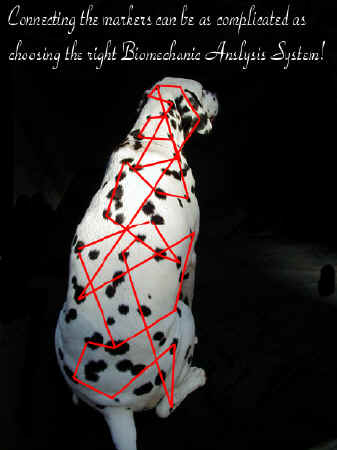
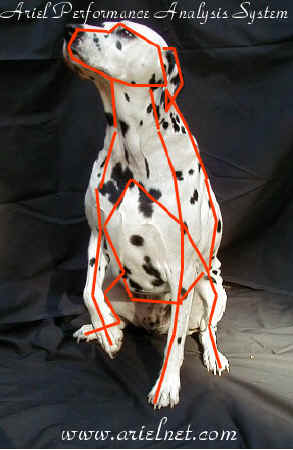

Introduction
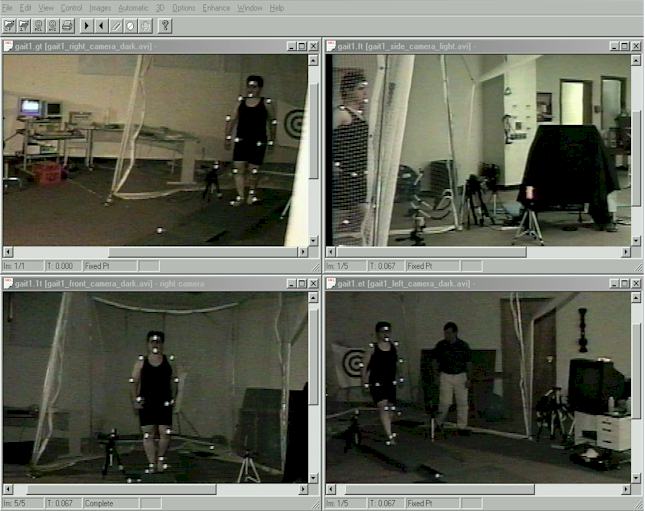
The APAS System is the only
system in the world that can digitize simultaneously 4 video images and use state of the
art video enhancement.
Digitizing is the first step for analysis after
the recorded images have been captured trimmed and stored on the hard disk of the
computer. By trimming the raw video files, the sequences become synchronized and the
frames are match to the same time base line. The APAS 4 Screens DIGITIZING APPLICATION
(DIGI4) software is a Windows 95/98/NT based program for digitizing images to be analyzed
using the Ariel Performance Analysis System (APAS).
Initially, the
video image is captured and stored in memory. This eliminates any further need for video
apparatus. The image sequence is then retrieved from computer memory and displayed,
on the digitizing monitor. The two video files that we will be use in this tutorials are:
-
gait1_right_camera_trimmed.AVI
(1MB) Trimmed file for the right camera
-
gait1_left_camera_trimmed.AVI
(1MB) Trimmed file for the
left camera
Make sure that you download these files so you can
digitize them.
The
captured image can be enhanced or altered in several ways. These included Zooming the
whole frame or a defined, isolated portion of the view. Changing the size may help the
person digitizing to more accurately determine a particular joint which in the standard
view could not be identified. This is a very unique feature which allow small images to be
enlarged and digitized. A dynamic zoomed window, in addition to the regular zoom,
allow very accurate determination of the body's joint center or the location of a marker.
The following video file demonstrate some of
these functions. (2.5 MB). (Click here to see or download the video file:
video/zooming_and_enhancement0001.avi
2.5MB).
You may download the file and play it with the media player or, if you have a fast
internet line, you may open it in real time. This video file illustrates only few
functions which I am sure will impress you. All functions will be demonstrated in latter
lessons and a very detail explanation will be given.
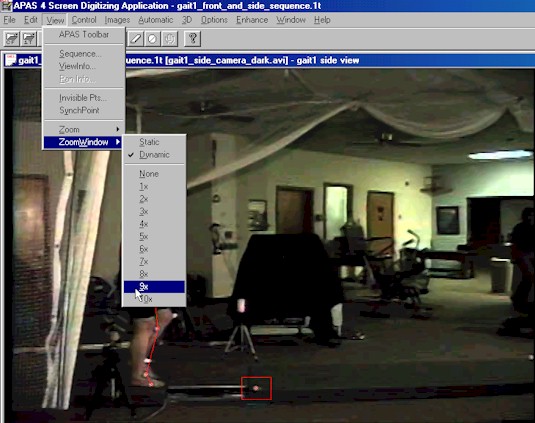
You can select from x1 to x10 dynamic zoomed window.
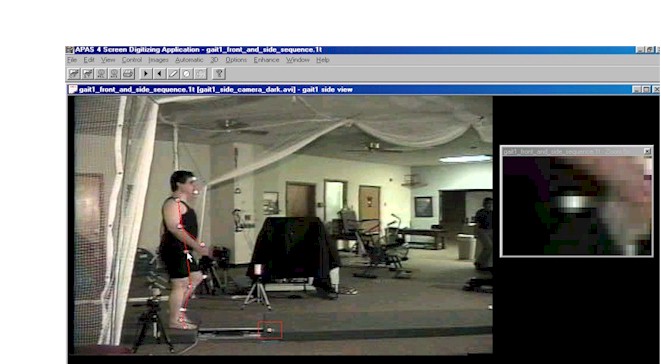
Dynamic Zoomed Window is one of the uniqness of the
APAS, where you can point to any location on the video image and a dyanamic zoomed window will be open and show the location in
magnification OF x1 TO x10. This window is dynamically moves with the cursor
Using the video cursor, the location of each of
the subject's body joints or marker, is selected and entered into the computer. As each
point is selected, it is displayed within the video image on the monitor. This assists the
user to evaluate his current joint selection with the perspective of the previously
identified joint center. Another useful feature is the "rubber-band" effect.
This situation occurs when the previously selected joint in the current frame is
"fixed" while the next joint center is being located. The computer connects the
preceding joint center with the cursor. As the cursor is moved to establish the joint
center location, a line is created which moves according to the cursor motion. This assist
in digitizing since the connection between the two points represents the segment between
the two joints.

"Rubber-band"
assistance
The following video
clip show step by step the selection and the use of the dynamic zoomed window. Download
the file .avi and use the MS Media Player to advance the video frame by frame to see the
functions. This video was highly compressed to save download time. Also, only few
frames per second were captured with the APAS system to allow efficient demonstration and
in the same time to save the download time. Digitizing
Zoomed function video. (1.5MB)
One may
ask: "why do I need a video? there are systems that digitize the markers for me and I
do not need the video....." Well, my answer to this is that without the picture you
missed the performance. You have analyzed markers, but not human. Location of
markers changing with skin movement. Different position of the body's segment may give
different coordinates. You must have the video to demonstrate and analyze the
results. You cannot have eyes and act like a blind. You must see the original video to
make valid and reliable decision about the activity. In addition, by having the video, you
always maintain the original data. If in the future you need to re-digitize the raw data
since you decided to add a point location, you can always go back to the original video.
With markers, you lost the original performance.
For more
information please read the following detail dissertation about markers:
Three-Dimensional
Tibiocalcaneal and Tibiofemoral Kinematics During Human Locomotion - Measured with
External and Bone Markers
by Christoph Reinschmidt
After reading this Dissertation, you will find
out, that there are many ways to determine a potential joint center. But in all cases
there are significant errors. Even by inserting marker to the bone itself, which is not
practical, yield level of error. From my experience over 30 years using many of the
methods, I did not find yet a better method then using knowledge of anatomy and manually
estimate where the joint is utilizing the great power of the brain and the visual cortex,
to determine with your eyes where the estimated joint is. Unfortunately, this take
longer time to achieve since you need to digitize manually each point. This why we
developed the automatic method which utilize filters and enhancement to locate the joint
automatically. However, again, this associate with some level of error. What is important
is that you can evaluate the error by looking at the points after they the digitizing
process was finished. To do this we allow you to super imposed the "stick
figures" over the original video for verification and checking. Then if a point is
our of line, you can manually correct it.
Digitizing can
be performed in one of two modes, either Manual or Automatic. Manual digitizing is
performed under computer control and the digitizing of video images is computer assisted.
Under manual control, user participation in the digitizing process provides an opportunity
for error checking and visual feedback which rarely slows the digitizing process
adversely. A trained operator with a reasonable knowledge of anatomy and a consistent
pattern of digitizing can rapidly produce high-quality digitized images. Automatic
digitizing requires some sort of visible markers. These may be reflective markers,
LED's or simply markers with a high contrast to the immediate background such as white
markers against dark background or black markers against a white background. User input is
minimal as the computer automatically tracks the markers based on color, contrast,
position, velocity and acceleration.
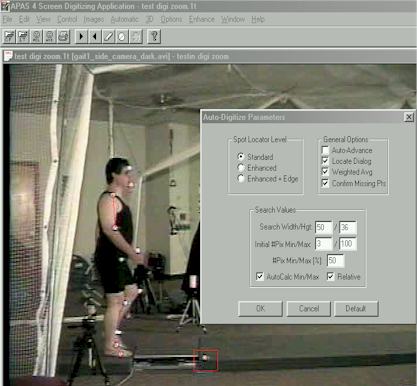
Global Parameters selection for Automatic Digitizing (Discussed in
detail latter).
Full 3-Dimensional
integration has also been incorporated. During the digitizing process, 3D stick figures
and graphical information can be displayed simultaneously. Graphs and stick figure images
are updated immediately as the sequence is digitized.
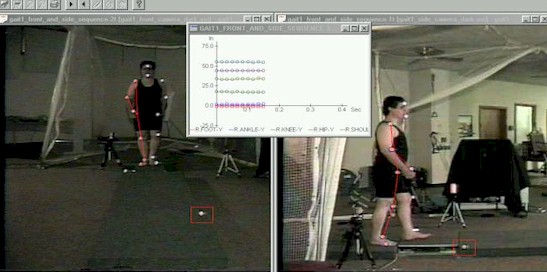
Real Time calculations of
3D parameters while automatic or manual digitizing
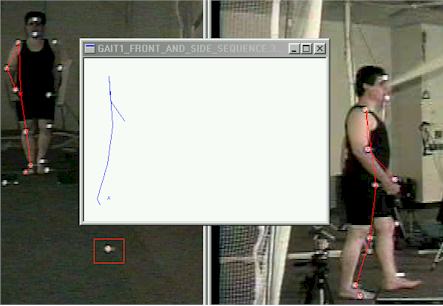
Real Time Stick Figure
orientation in x,y or z configuration
As one can see, the APAS system is very powerful
in many ways. While you digitize automatically, you can observe the orthogonal stick
figures or the raw data displacement in x,y, and z coordinates. This allow to see
the accuracy of the system while it is processing and if anything is not acceptable, to
halt the progress and correct it. One of the most amazing thing about the APAS system is
that you always see the video data. The APAS system is the only system in the World that
can do it. With other systems the digitized point could fall out of the body's joint and
you will never know about it, especially where all other systems filter the raw data, so
the user will not find these errors latter. With the APAS system you always maintain the
raw data. An absolute requirement for valid experimental procedures. This is one of the
reason why the APAS system came
at the top in the official comparison of existing systems.
The APAS system
was designed from the ground up to the Internet standards. Ariel Dynamics was one of the
first in this technology, to utilize the Internet for files and data interchange. We used
the Internet as early as 1976, but, at that time it was actually a Unix system and we ran
mostly FTP protocols. In 1992, Ariel Dynamics used Mosaic I from the University of
Illinois, and we were one of the first
100 organizations in the World to use a browser. In 1995, I presented a paper at
the ISB indicating the Internet as the future for any science in the World. At that
meeting I demonstrated digitizing through the net between different sites. We were
the first on the Internet for any Biomechanics organization and we designed our system
accordingly. Today, the APAS system is still the only Internet compatible system in
the World. The file structure of the APAS also opens the possibility of sharing data with
other users. Since data records are stored as a file on the hard disk, these files can be
transmitted worldwide by modem or through File Transfer Protocols (FTP) on the Internet
for collaborative purposes. Files can be downloaded from the web pages and collaborative
work can be done with people around the World simultaneously. In a University environment,
all files can be maintain on a main server and people around the World can share the data
and results through the Internet and Intranet.
The DIGI4 program presents many
options and features to the user, however, they are relatively easy to master once you
understand the concepts behind them. This Tutorial is arranged to teach you these concepts
in a logical order by showing you in a step-by-step fashion, how to use DIGI4.
In Summary, Some of the essential features in the Digitizing Module are as follows:
- Multiple Screen Digitizing. Up to four images can be
displayed and digitized simultaneously.
- Multimedia Compatible Image files can be displayed in
*.AVI format utilizing Intel Indeo technology and others.
- Real-Time Video Capture. Video can be captured directly
from the video source at rates up to 1000 fields per second, depending on the type of
camera.
- Real-Time 3D Transformation. 3D data files can be
generated and displayed simultaneously with the digitizing process.
- Software Support For Panning Camera. Software developed by
Ariel Dynamics allows for "Panning" cameras without additional hardware.
SYSTEM REQUIREMENTS
The
following table provides the basic guidelines for required hardware to provide the best
possible performance. Required software includes Microsoft Windows 95 or later and Ariel
Revision 3.5 or later.
Image Format Required Hardware:
*.PCL(*.PCX) No Additional Hardware Required
*.AVI Video For Windows Compliant Video Board
The Digitizing Process
 To start the Digitizing Module,
Double-click the DIGI4 icon located in the APAS window group. The
main DIGITIZE menu will appear. You are now ready to create a new digitizing Sequence or
restore a previously created Sequence.
To start the Digitizing Module,
Double-click the DIGI4 icon located in the APAS window group. The
main DIGITIZE menu will appear. You are now ready to create a new digitizing Sequence or
restore a previously created Sequence.
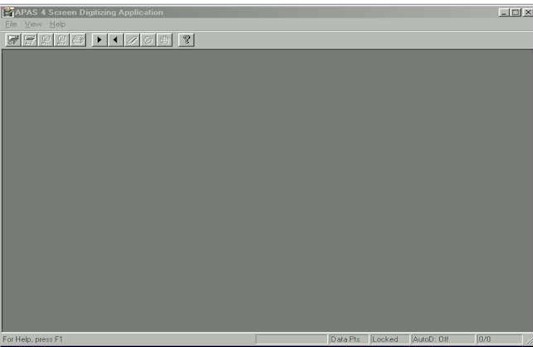
Digitizing Screen 1
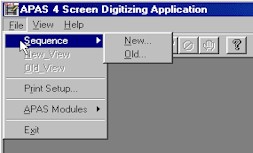
Selection of new or old sequence
The following video file (2MB)
illustrates the procedures in creating a new sequence and a viewing in the Digitizing
Module. A sequence contain multiple views. Each camera create a view. A sequence
can have up to 256 views or 256 cameras. Of course, this is not necessary and in most
cases only 2 to 5 views or cameras are used. Make sure that you download this video file
and follow it step by step with the MS Media Player. You will see the process of selecting
a new sequence and a new view.
The following video file will take you
through all the Tool Bar and Status Bar characteristics: (5.7MB)
Check our manuals
online for a description of the toolbar.
[ Previous ] [ Up ] [ Next ]